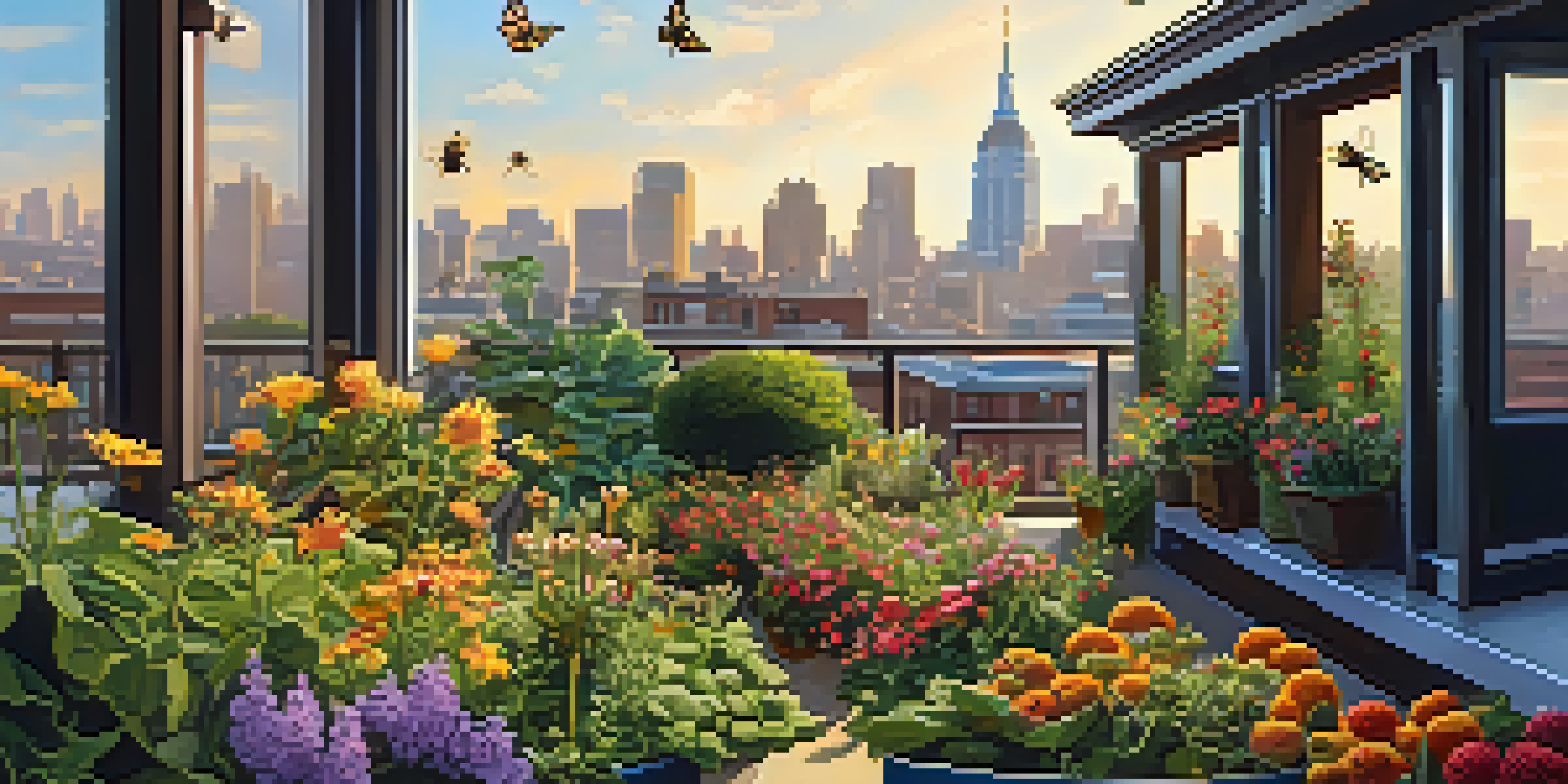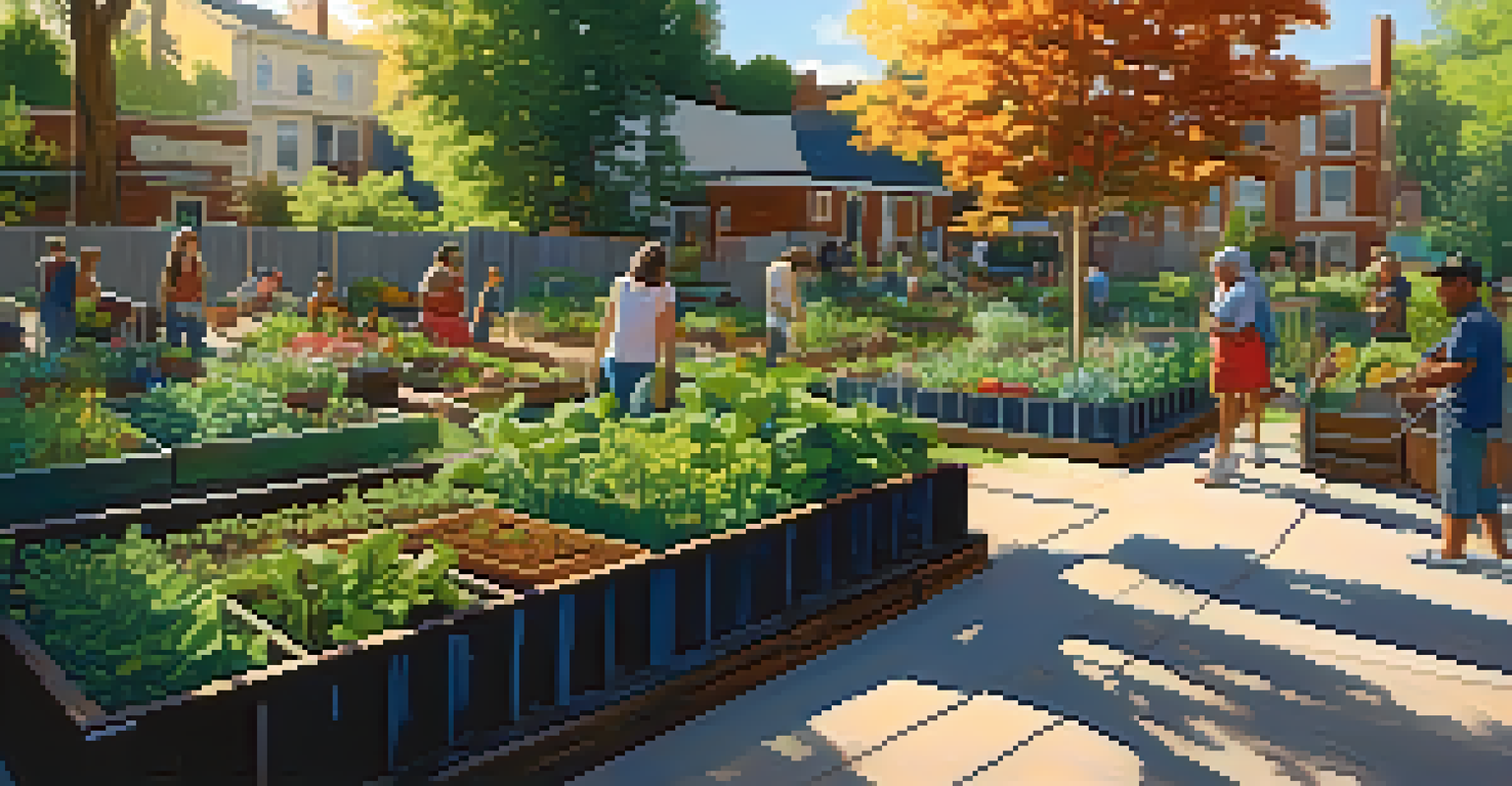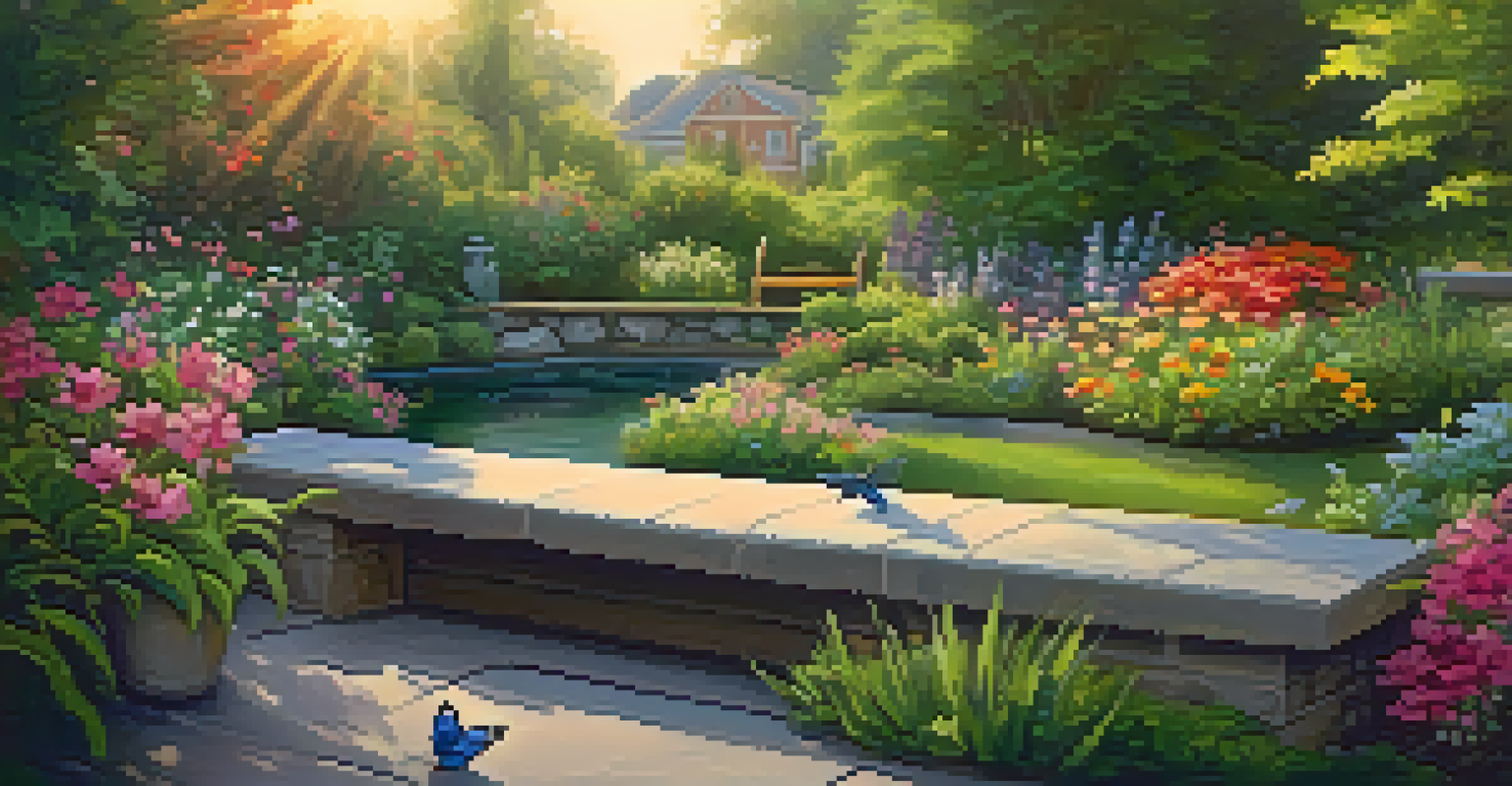Urban Gardening: A Strategy for Enhancing Plant Biodiversity

Understanding Urban Gardening and Its Importance
Urban gardening refers to the practice of cultivating, processing, and distributing food in or around urban areas. This method not only beautifies city landscapes but also plays a crucial role in enhancing plant biodiversity. By transforming underutilized spaces like rooftops, balconies, and vacant lots, urban gardeners can introduce a variety of plant species into their communities.
The greatest threat to our planet is the belief that someone else will save it.
One of the key benefits of urban gardening is its ability to create habitats for different organisms, including pollinators like bees and butterflies. These gardens can serve as crucial green corridors in densely populated areas, promoting ecological balance. Thus, urban gardening is not just about growing plants; it’s about creating ecosystems that support diverse flora and fauna.
Moreover, urban gardening fosters a connection between people and nature, reminding city dwellers of the importance of biodiversity. It encourages individuals to appreciate and engage with their local environment, leading to a more sustainable urban lifestyle. In essence, urban gardening is a vital strategy for enhancing plant biodiversity in our increasingly concrete jungles.
How Urban Gardens Promote Plant Diversity
Urban gardens often feature a wide range of plant species, from native plants to exotic varieties. This diversity helps to create more resilient ecosystems that can withstand pests and diseases better than monocultures, where only one species is grown. By including a variety of plants, gardeners can also attract a broader range of pollinators and beneficial insects.

Incorporating native plants into urban gardens is particularly important, as they have adapted to local climates and soil conditions. Native species typically require less water and maintenance, making them a sustainable choice for urban gardeners. Additionally, they support local wildlife and contribute to the overall health of the ecosystem.
Urban Gardening Boosts Biodiversity
By cultivating diverse plant species in cities, urban gardening creates habitats that support various organisms and enhance ecological balance.
Furthermore, urban gardening encourages community involvement, which can lead to even greater biodiversity. When neighbors come together to share plants, seeds, and gardening tips, they create a richer tapestry of plant life. This communal approach ensures that diverse gardening practices are shared and adopted, further enhancing plant diversity in urban settings.
The Role of Community in Urban Gardening
Community involvement is at the heart of successful urban gardening initiatives. When individuals collaborate on gardening projects, they can share resources, knowledge, and enthusiasm, which often leads to more diverse plant choices. This collective effort can transform an ordinary plot of land into a vibrant garden filled with various species.
In every walk with nature, one receives far more than he seeks.
Moreover, community gardens often serve as educational platforms where people can learn about different plants and sustainable gardening practices. Workshops and events can introduce participants to native plants, permaculture, and organic gardening methods. This hands-on experience not only boosts biodiversity but also empowers individuals to make informed decisions about their own gardening efforts.
As communities come together to cultivate urban gardens, they create a sense of ownership and pride. This strengthens social ties and fosters a shared commitment to preserving and enhancing local biodiversity. Ultimately, community engagement is vital for sustaining these gardens and ensuring their continued contribution to urban plant diversity.
Designing Urban Gardens for Biodiversity
The design of urban gardens plays a crucial role in promoting biodiversity. Incorporating various layers of vegetation, such as trees, shrubs, and ground cover plants, can create a multi-dimensional habitat that supports a wide range of species. Additionally, using vertical space, such as trellises and living walls, allows for even more diversity in plant selection.
Another important aspect of garden design is the inclusion of water features, such as ponds or rain gardens. These elements not only provide essential water sources for plants and wildlife but also create microhabitats that attract various organisms. By incorporating different zones within the garden, you can support diverse ecosystems that thrive on the interactions between plants and animals.
Community Efforts Enhance Gardens
Collaboration among neighbors in urban gardening fosters a sense of ownership and leads to a richer variety of plants and practices.
Furthermore, urban gardeners should consider the seasonal aspect of biodiversity. Planting a variety of species that bloom at different times throughout the year ensures that food sources are available for pollinators and wildlife year-round. This thoughtful approach to design can make urban gardens not only beautiful but also vital for sustaining biodiversity in city environments.
Challenges and Solutions in Urban Gardening
While urban gardening offers numerous benefits for plant biodiversity, it also presents challenges. Limited space, poor soil quality, and pollution can hinder the growth of plants in urban environments. However, with creativity and resourcefulness, gardeners can overcome these obstacles and create thriving green spaces.
For instance, raised beds and container gardening can maximize limited space and improve soil conditions. Using organic compost and soil amendments can enhance soil fertility, supporting healthier plant growth. Additionally, selecting hardy plant species that are tolerant of urban conditions can help ensure success in challenging environments.
Community support is also crucial in addressing urban gardening challenges. By sharing resources, such as compost, tools, and knowledge, gardeners can work together to create sustainable solutions. This collaborative spirit not only helps overcome obstacles but also strengthens the bonds within the community, further enhancing the biodiversity of urban gardens.
The Environmental Benefits of Urban Gardening
Urban gardening contributes significantly to environmental health by promoting biodiversity. These green spaces help to mitigate urban heat, improve air quality, and reduce stormwater runoff. By increasing the number of plants in cities, urban gardens can play a vital role in combating climate change and enhancing overall ecological resilience.
Moreover, urban gardens provide essential habitats for various species, including birds, insects, and small mammals. The diverse flora supports these organisms, creating a balanced ecosystem that thrives in urban settings. As cities continue to expand, these gardens become crucial sanctuaries for wildlife in an otherwise inhospitable landscape.
Design Matters for Biodiversity
Thoughtful garden design, including layered vegetation and seasonal planting, is essential for creating thriving ecosystems in urban environments.
Additionally, urban gardening can foster a culture of sustainability. As more people engage with nature and learn about ecological practices, they become advocates for preserving biodiversity in their communities. This shift in mindset can lead to more significant environmental initiatives at the local level, ensuring that urban areas become greener and more biodiverse.
Getting Started with Your Own Urban Garden
If you're inspired to start your own urban garden, the first step is to assess your available space. Whether it's a small balcony, a backyard, or even a windowsill, you can create a thriving green space. Consider the amount of sunlight your area receives and choose plants that will thrive in those conditions.
Next, think about the types of plants you want to include in your garden. Opt for a mix of native species and edible plants to promote biodiversity while also providing food for yourself and local wildlife. Starting with seeds or seedlings from local nurseries can help ensure that your plants are well-suited to your urban environment.

Finally, don’t hesitate to reach out to your community for support. Join local gardening groups or attend workshops to learn from experienced gardeners. They can offer invaluable advice and help you connect with others who share your passion for enhancing plant biodiversity through urban gardening.